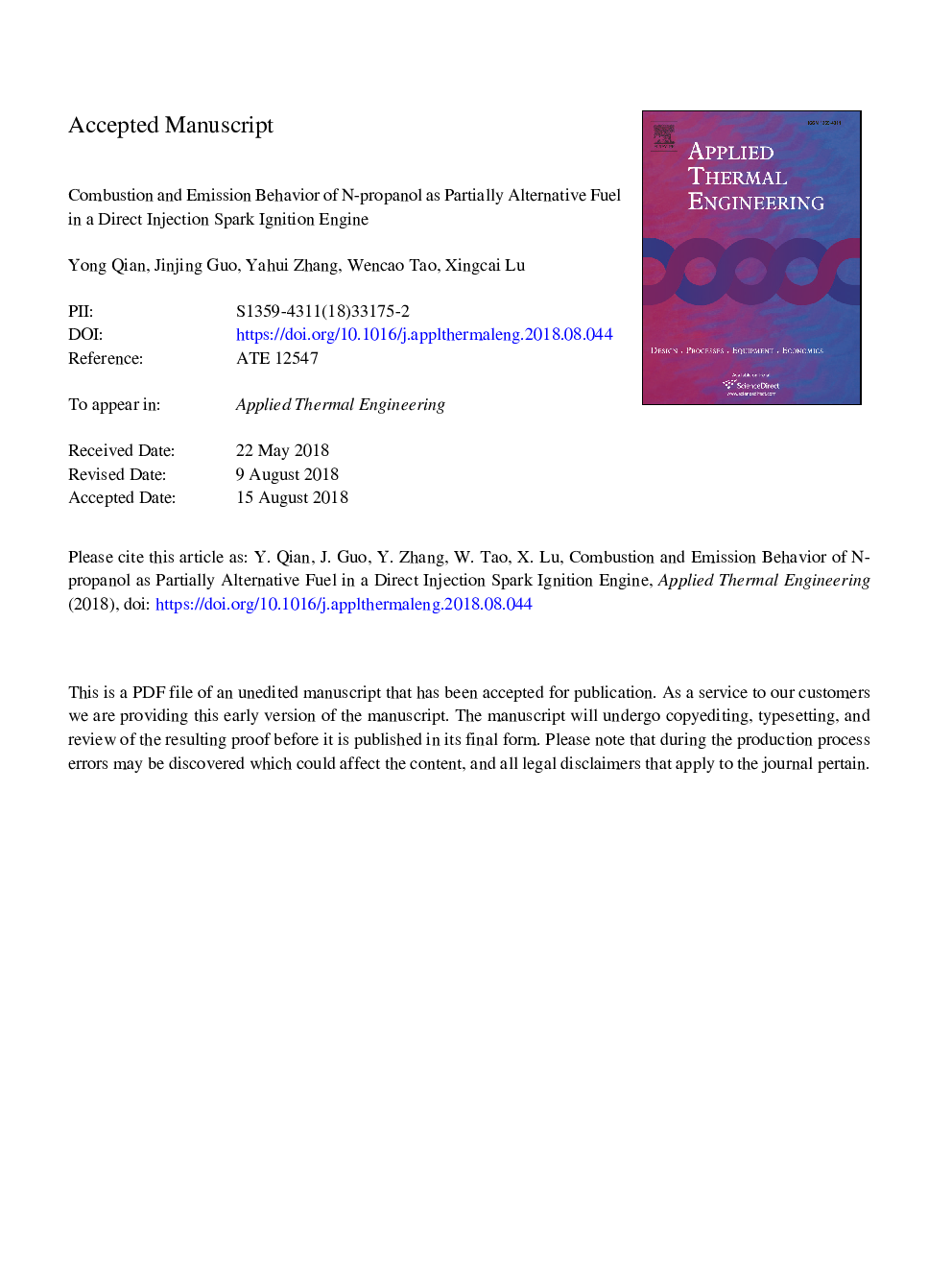| Article ID | Journal | Published Year | Pages | File Type |
|---|---|---|---|---|
| 8941922 | Applied Thermal Engineering | 2018 | 35 Pages |
Abstract
Alcohols have always been the important alternatives to gasoline. Propanol is expected to be widely used in a spark ignition engine due to the higher heating value than ethanol. In this study, the combustion and emissions of n-propanol/gasoline surrogates were studied. The proportions of n-propanol in blends are 10%, 30% and 50% by volume, and the mixed fuels were named as PRTRF0.1, PRTRF0.3, and PRTRF0.5, respectively. The proportions of n-heptane and iso-octane of gasoline surrogates were adjusted to maintain the same research octane number at 95. Results show that the blends with higher proportions of n-propanol lead to higher maximum in-cylinder pressure, higher maximum in-cylinder mass averaged temperature, shorter flame development duration, and shorter rapid combustion duration. The CO, THC, alkane, acetylene and aromatic emissions decrease as the proportion of n-propanol increases. However, PRTRF0.3 has the highest alkene and aldehyde emissions. Both of the geometric mean diameter of particle matters and the accumulation-mode particle ratio in particle matters decrease as the proportion of n-propanol increases. The effective thermal efficiency of the engine increases with the increase of the proportion of n-propanol. PRTRF0.5 has the highest effective thermal efficiency at the medium load up to 33.1%.
Related Topics
Physical Sciences and Engineering
Chemical Engineering
Fluid Flow and Transfer Processes
Authors
Yong Qian, Jinjing Guo, Yahui Zhang, Wencao Tao, Xingcai Lu,
